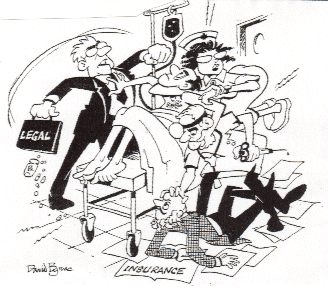3 Volumes
Philadelphia Medicine
Several hundred essays on the history and peculiarities of Medicine in Philadelphia, where most of it started.
Health Reform: A Century of Health Care Reform
Although Bismarck started a national health plan, American attempts to reform healthcare began with the Teddy Roosevelt and the Progressive era. Obamacare is just the latest episode.
Second Edition, Greater Savings.
The book, Health Savings Account: Planning for Prosperity is here revised, making N-HSA a completed intermediate step. Whether to go faster to Retired Life is left undecided until it becomes clearer what reception earlier steps receive. There is a difficult transition ahead of any of these proposals. On the other hand, transition must be accomplished, so Congress may prefer more speculation about destination.
Medical Malpractice
The medical system is on the point of abandoning the city to escape abusive lawsuits. A series of observations about shared blame, ultimately assigns responsibility to the mistake of allowing this matter to be covered by insurance, thus creating a financial target.
A scourge of modern society, medical malpractice suits have driven up the cost of health care and driven physicians out of practice.
Those who most strongly support the lawyers in opposition to tort reform aimed at curbing this blight are the very same people who cry the loudest about "unaffordable health care".
A viler form of hypocrisy can hardly be imagined.

Directly Reforming Malpractice Insurance Is a Blind Alley
 Defense lawyers frequently suggest reforms of the law which would make their job easier 
|
| Dr. Fisher |
It seems entirely possible that malpractice insurance, by creating an irresistibly attractive "deep pocket", might well be the root cause of the malpractice crisis. Insurance can certainly cause harm, at times. It can induce people to do unnatural things, like using their own brother. Graphically termed "the moral hazard of insurance," perverse incentives create a principle: society must be vigilant against insurance benefits becoming more attractive than the covered event. It's unsafe to assume people will never sink ships or torch houses to collect insurance. If they are over-insured there is still a greater temptation. Meanwhile, salesmen have a commission incentive to sell more coverage. Frightened physicians would buy unlimited malpractice coverage if they could get it.
So, it is legitimate to wonder if excessive malpractice insurance might actually have stimulated malpractice claims, converting over-insured physicians into attractive targets. One of the clear duties of insurance regulators is to forestall such effects. That can be achieved by imposing top limits on insurance coverage, regardless of outcry to buy more, or eagerness of insurers to provide it. In the past thirty years, however, state insurance commissioners have undoubtedly turned away from their traditional goal of preventing insurance company default, and now somewhat adopt the role of consumer advocate, holding down premiums. By itself, the resulting impairment of insurance reserves may have contributed to waves of market exodus during dips in the premium cycle. Permitting unwisely higher levels of coverage to be sold to worried customers may then have been an extended consequence. Regardless of the causative effect of these changes, however, they are too politically charged, too difficult to prove, and too far advanced to reverse in any reasonable time, for relief of the present malpractice difficulties.
A number of other problems exist in the malpractice insurance mechanism, which will be discussed next. However, they all are too intertwined with conflicting issues to have realistic hope of fixing them. Compared with a mandatory cap on pain and suffering, insurance tinkering is unlikely to have a useful effect very soon.
Mandatory Coverage. Unfortunately, many states have sought to create more insurance coverage, not less, an unfortunate stimulus if overgenerous insurance is already creating enticement to sue. The commonest method is to make insurance coverage mandatory for those holding a license to practice. Using the self-defeating argument that the public needs to be promised restitution, mandatory coverage surely dispenses with sales resistance. It imposes premium charges on people whose personal assessment is they don't need insurance, and raises the potential limits of coverage on those who feel they can't afford more. It thus spreads premium costs from people truly at risk, out to bystanders. But ensuring people unnecessarily may itself create a risk of their now becoming the target of suit.
The claims-made type of policy. Under this a system, there are really two policies -- one for any claims made (filed) during the current year, and a second "tail" policy for claims that straggle in later. Whether by genius or accident, malpractice insurance companies introduced this technical "reform" on their own devising, and like most solutions, it generates new issues. The idea revolves around a peculiarity of professional liability insurance: few malpractices claims are ever filed during the first year after the event.
That makes the premium charged for the first year pretty arbitrary. Potentially, it's a loss-leader to attract new sales, or an emergency solution for some political crisis. Therefore, "claims-made" policies obscure underlying cost trends. Deferring the rest of the premium into a second ("tail") policy reduces the amount available for investment, and therefore increases the final total cost. Those are the bad features, which are emphasized by discovering instances when the tail is more than four times as large as the "basic" policy.
On the other hand, the risks for the insurance company are greatly reduced by the potential to adjust most of the premium in retrospect. An industry subject to demolition every thirty years surely needs some reduction of risk. It's true that much of the risk is transferred from the company to the doctors, but ultimately the customers to pay for all costs of any vendor. By smoothing out unexpected volatility in the court environment, the legitimate costs of financing this lottery are actually reduced, although it is not known by how much. Since 60% of malpractice insurance is sold by companies owned by medical societies, the reduction of company cost probably mostly comes back to the doctors.
However, that may be too complacent a view. Individual doctors come and go as customers and an opportunity to game the system is potentially created. Long-term deferral of true costs can be adjusted to some degree, creating a temptation to market-time investments but prove wrong in the timing. Timing of these revenue flows can be used to out-guess the tax system and creates the opportunity to squeeze out competitors who have less capital. Since the tail is seldom accumulated as a single payment but is rather fed out in partial surcharges to future basic premiums, the companies have the latitude to forgive the tail completely if they happen to choose. Since the companies are comparatively small, the potential is there for intergenerational cost-shifting, or cross-specialty subsidies, raising an issue of how the officers are chosen. In short, this complicated obscurity can get doctors involved in considerations they do not understand, making decisions for which they have no training, amateurs playing poker with professional card sharks. For emphasis, throw in some tricky accounting, with GAP for one set of books and SAP for another, and you begin to wonder why you ever got involved. It's a way to lose your shirt, ending up with the blame for ruining your own respected profession.
The insurance company antitrust exemption. Considerable uneasiness revolves around the position of the insurance industry and its federal antitrust exemption, effectively established in 1945 by the Scarring Ferguson Act. No federal agency (the Justice Department and the Federal Trade Commission in particular) may interfere in the business of insurance except "to the extent such business is not regulated by State law." All states passed regulatory laws, but for twenty years there were loopholes of one sort or another, gradually closed. We now face the fact that repeal of this law, which is generally an undesirable one, would very likely generate another long period of loophole closures. Whatever the merits of repeal in other fields of insurance, the potential for regulatory turmoil in professional liability insurance seem to outweigh the desirability of introducing this issue. In particular, the repeal might lead to subsidies of states with unsatisfactory court systems, by states with good ones. No one would claim that repeal of the Act would solve the malpractice problem, or that passage of the law caused it. There's quite a difference between noticing the existence of insurance created a very tempting target and hoping the correction of flaws in insurance management, however numerous, would help very much.
Linking Malpractice Insurance to Health Insurance: Don't Even Consider It.
While tinkering with insurance cannot rescue this problem, one wrong kind of tinkering could utterly disrupt the three professions in conflict. From time to time, a lawyer will suggest to a physician that we could all be friends again if we just got health insurance companies to pay malpractice premiums as a "pass through." The lawyers would then have a direct pipeline into the insurance companies or better still Medicare, and the physicians wouldn't have to care how much the awards were. Strictly no hard feelings, and we all march arm in arm to the bank. Such proposals actually do get floated in medical society meetings, and there are people so desperate they actually consider them. However imperfect other proposals may be, they do not compare with this one in betrayal of the public.
Don't get to the root of it, please. If we were writing a scholarly thesis about the root causes of the malpractice crisis, instead of just trying to keep it from wrecking the health delivery system, the surmises might go as follows. The malpractice insurance business is inherently cyclic and tends to drive nearly every insurance company out of the field, about every thirty years. That strongly suggests the insurers are undercapitalized, unable to accumulate adequate reserves for severe downturns in the lean years. And the reason for this is probably political. The reserves needed to withstand cyclic downturns cannot be accumulated during the fat years when state governments (in the form of the Insurance Commissioners) experience strong political pressure to force premiums down. State involvement in the Medicaid system possibly provides special incentives to hold down overhead costs like malpractice premiums, and competition from insurers based outside the state boundaries may provide another. If this analysis is near the correct explanation, unraveling it entails an impossibly complex agenda. At a time when straight-forward limitation of non-economic awards is probably adequate for the purpose at hand, a top-to-bottom insurance reform would involve the repeal of the McCarran Ferguson Act, higher premiums in the face of huge existing reserves, a reversal of attitudes by fifty state governments, revision of the Medicaid financing process, and patient re-education of the public to accept all this. Such an agenda is so ambitious it amounts to a decision in advance to do nothing effective about the problem.
Furthermore, the internal problems of the insurance industry are probably only part of the main causes for instability.
Pointing fingers and blaming others is considered counter-productive in solving problems, but that's not always so. "Getting to the root of it" is often quite a good way to isolate a single simple cause to be remedied. In the case of medical ability, the root cause may well have been the creation of malpractice insurance, but that analysis leads nowhere. Physicians eagerly purchased the insurance when it was cheap, and would now quit practice rather than go without it. Placing a cap on pain and suffering awards is not only politically achievable, but it also has a proven record of success in California and Indiana. At the moment, we are more in need of something which will work than something which advances the borders of justice. If we get twenty years of respite, perhaps pell-Melli medical progress will slow down so we can learn whether the drugs in common use have unanticipated good or bad effects, and how best to use them. Or perhaps some genius will devise a fair and reasonable judicial approach. In football, that's what is known as playing for the breaks. An insurance approach to what may well be mostly an insurance problem is not presently visible.
Desirable Technical Reforms of the Tort System Itself
This paper takes the position that procedural reforms, whether in the insurance industry or the legal system is not likely to be much help in bringing the disrupted system to prompt stability, or will not do so in a reasonable time. Compared with a cap on pain and suffering, small reforms are not worth the political cost of fighting for them. However, there are a few other reforms that are desirable in themselves, and since they involve money, might just prove to contribute importantly to a quick stabilization.
Pre-trial awards bargaining. Those who might prefer caps on insurance coverage to caps on awards, should be aware of some practices which undercut the practicality of simply limiting total awards without first subdividing them into economic and non-economic components. It is not unusual for both sides in a court case to agree in advance of the trial to setting both maximum and minimum awards. The maximum is usually the utmost limit of insurance coverage, paid if the jury finds for the plaintiff. If the jury rules in favor of the defendant, an agreed minimum amount is nevertheless paid to the plaintiff. This system holds out the promise that the actual award will not attack the defendant's personal assets even if he loses the case, in return for which he agrees to let his insurance company pay consolation awards to the plaintiff and his attorney if they lose. This seemingly the collusive arrangement is justified by arguing that the minimum amount is specifically aimed at the economic damages, leaving the pain and suffering part for the jury to decide.
Unfortunately what it does is increase the willingness of both sides to go to trial, and it drives the award to the extreme upper limits of the policy. It has the additional bad feature of rewarding the plantiff's attorney whether he wins or loses the case, thus creating an incentive to take weak cases to court. Speaking broadly, this system has the effect of letting the insurance limits set the award, and behind that, the insurance commissioner setting the policy limits, artificially high because of the political pressures on him. The objective fact is that plaintiff attorneys are overwhelmingly members of one political party and heavy contributors to it. Election of a governor (who appoints the insurance commissioner) from that party results in a safe prediction of higher coverage limits, awards, and premiums. This subtlety could not continue without at least the tacit permission of the insurance industry to the pre-trial agreements.
Double-dipping true economic damages ( The Collateral Source Rule). Even a quick look at medical malpractice data shows the non-economic awards called "pain and suffering" are as preponderant as they are nebulous. Some describe awards for pain and suffering as capricious and arbitrary, but at the least, they appear emotional. Awards correlate better with the degree of disability than with the degree of negligence. Awards for true economic damages are viewed more sympathetically by the public, who are unaware they are mostly already covered by health insurance, a doubling effect which juries are not permitted to know. Furthermore, in the settlements which determine most of the overall costs of this process, the amount set aside for pain and suffering is traditionally a multiple (seven or eight times) of the "medicals". Since, if you dig into it, it can easily be shown that hospital, drug and equipment charges are already highly inflated above cost, there is a serious multiplier effect at work with the "economic damages".
The outcome of these technical quirks is that both economic and non-economic damages are often excessive, but for different reasons under differing circumstances. For this the reason, it is not a completely satisfactory solution to place a single combined top limit on overall awards, or on insurance coverage limits.
Structured Payment of Damages (Periodic Payments).
The payment of damages is an attempt to put a money value on injuries so that dispute will come to an end. When a plaintiff is disabled, however, it is not possible to know in advance how long he will live, and what he will need. Calculations are therefore made about probable life expectancy and probable costs of long-term disability care. The resulting damage award can sometimes be very large, be paid in a lump sum, and the plaintiff attorney is awarded a third of it. However, the plaintiff has the responsibility to save money and invest it wisely, but that does not always happen. An insurance company is understandably unhappy to pay out an award which is invested to return less money than the insurance company was earning through its own investment department. And the defense side is even more understandably upset when the plaintiff dies in a few months, but his estate retains large sums that were calculated for his care but now will be spent at the pleasure of the heirs. It would be of value to have longitudinal studies of the disposition of these awards, for the guidance of future courts. Current awards could just as easily prove to be too small as too large.
Assuming the money could be placed in safe hands, it seems likely to be invested better and last a longer period of time, if the money calculated to be a certain amount each month, were actually paid out at that rate, month by month, instead of in a lump sum. A the more careful and more efficient system would surely prove to lower costs.
Malpractice Epidemic?
 The best way to avoid malpractice suits is to avoid committing malpractice in the first place 
|
| The Tort Bar |
Plaintiff lawyers, responding to increasingly effective attacks by the medical profession, retort the best way to avoid malpractice suits is to avoid committing malpractice in the first place. That's more jibe than a serious argument. But if it seriously intends the implication that increased volumes of medical malpractice cases signify increased levels of incompetence, that is unlikely to be true. Medical school applications have become almost incredibly selective for talent (sometimes reaching a level of 12,000 applicants for 200 places), the duration of postgraduate medical training is regularly protracted by several years after the four years of medical school, and legislation is actually being considered to compel these over-achieving trainees to work shorter hours so there can be no legitimate excuses for performance that isn't absolutely tip-top. It seems much more likely that this intensely competitive training environment has pushed medical standards to overly exacting levels of constant self-criticism, which is cited by censorious expert witnesses to imply that only a scoundrel would fail to measure up. In fact, most of the problems grow out of the snide comments of economic competitors, advertising their differing positions in the chain of information transfer.
As far as net effectiveness is concerned, the basic goal for medical care is to prolong human life. Whatever the medical profession has been doing during this alleged epidemic of negligence, people are apparently living longer in spite of it. In 1900, life expectancy at birth in retrospect was forty-seven years. In 2005, it is predicted to be seventy-seven years for infants born today, a gain of thirty years in a century. So to speak, the average person annually lived 16 months when predicted at birth to live only 12, and kept it up every year for a lifetime. During no other century has that ever been true. Despite an alleged malpractice epidemic, remember, allegedly getting worse every year.
So the medical profession takes offense at the surge in malpractice lawsuits, which we feel are unwarranted and ungracious. Congress and the public also need to see that rousing a respected profession to offended self-pity makes it much more difficult for leaders of the medical and legal professions to work together for dispute resolution, continuing quality improvement and effective peer review. The leadership of the medical profession has come to feel that the leadership of the legal profession has neglected its own self-policing duty. In almost every state every year, the number of lawyers disbarred is many fewer than the number of physicians losing their licenses. To imply that the standards for admission to Medicine are lower than the standards of admission to law school is not a statement supported by evidence. Nor is there evidence that self-policing by a conscience-driven profession is less effective than persecution by those who are paid to be censorious. Some research institution is challenged to examine a view widely held by the physician community: the graduates of mainly low-ranked law schools are chiefly responsible for attacking the performance of graduates of the highest-ranking medical schools, so class warfare also infiltrates this issue. These are all perhaps unhelpful rejoinders, and the risk of their further escalation is itself major justification for shifting priority from long-term reform, toward quickly cooling things off.
Malpractice: Blame Insurance Companies?

|
| Malpractice Insurance |
Physicians are in a mood to dislike the insurance industry indiscriminately. Health insurance was once provider-dominated but now is employer-dominated. Since that didn't happen voluntarily, it's a grievance. With health insurance the main source of relentlessly squeezed physician income, insurance middle-men are an unfocused target of antagonism. Unfortunately, irritation unfairly spills over to malpractice insurance, which however is an entirely different thing, run by an essentially different industry with its own principles and belief systems. There is one common historical feature, however. In both cases, health insurance and professional liability insurance, a health-related industry abandoned its field when it became unprofitable, and physicians then had to start their own insurance companies to cope with the resulting vacuum. When the insurance became profitable again, the commercial insurers wanted it back, and this annoying experience dramatized an essential conflict of attitudes. Physicians are in the medical business for life, in good times or bad; the sick are always with us. Businessmen, however, think it's normal economic behavior to drop unprofitable products. Since both sides stumbled into this situation without fully understanding its implications, it is not yet clear how to compromise two legitimate positions without disrupting an essential public service. If insurance will not play by our rules, perhaps we must reluctantly play by theirs.

|
| Blue Cross and Blue Shield |
We should examine the origins of provider-dominated health insurance, eighty years ago, some other time. In essence, however, physicians and hospitals started Blue Cross and Blue Shield because commercial insurers avoided the task. The commercial medical liability insurance industry, our present central topic, abandoned its field in 1974. By that time the cat was out of the bag, with physicians feeling endangered, or even prohibited by law, from practicing medicine without liability insurance. So physicians put up the money and started their own insurance companies, nick-named bedpan mutuals. That accidental foray into high finance put physicians on the inside of the industry's secrets, and very quickly put an end to their idea insurance companies were getting rich without taking big risks. We learned about premium cycles, and reserving philosophy, and dual systems (GAP and SAP) of insurance accounting. We learned appalling things about re-insurance, especially finite reinsurance. We learned about the politics of legislative insurance committees, and the politics of insurance commissioners. We learned, in short, that it's a cruel world out there, and that it's very easy to get lost in complicated details. Insurance companies create lots of problems, but we came to feel it was unfair to say malpractice insurance was unfordable because insurers were getting easy rich, that it was unacceptable to drive them out of business, and (quite unlike their cousin, health insurance) the solution to physicians' malpractice problem probably did not lie in reforming the insurance companies, however useful that might otherwise be. In fact, when the highly cyclic malpractice insurance industry just happened to be unusually profitable, the word "contraries" came up, and the day soon followed when I raised my hand and said, Let's just sell this company.
Malpractice: Captain of the Ship ... New Title, One Step At A Time, but A Big One.
 One important step is reducing the financial incentives for plaintiffs to sue 
|
| Dr. Fisher |
In a situation as complex as the medical malpractice crisis, it's hard to know where to begin, and how far to go. We argue here for reducing the financial incentives for plaintiff's to sue. Of the various steps which would accomplish that, the one with proven effectiveness is to place an upper limit of $250,000 on awards for non-economic damages, mainly pain, and suffering. Another step which is easy to explain is to allow juries to know about (and take into consideration) the economic damages which have already been paid by another insurance, like Blue Cross or Worker's Compensation. A third world is to pay out damages for support and disability month by month instead of in a big lump sum which may never be used. These financially-oriented changes, particularly the cap on pain and suffering awards, would be sufficient to stabilize the present chaotic situation for perhaps as long as ten years. During that period of respite, more basic reforms could be examined and tested. It would definitely be better not to get into many of the fundamental issues, just now.
-- The present tort system is said to have been invented by Charlemagne in the 8th Century, to put a stop to a private settlement of disputes by duels and revenge fights. It has evolved into a system which attempts to place a dollar value on every injury and compensate the injured party. It must be obvious that some injuries do not have any equivalent in dollars, and few injuries are much improved by being paid for. Society needs a long period of reexamination of how we can best compensate those who would benefit from financial compensation, and then what to do about problems that money will not solve. We need a new system that is less expensive to operate, gets better results quicker and has less tendency to provoke dissention. To do that well, will first require at least ten years of stability, not likely unless we do something first to stabilize.
-- Too many other issues are crowding the attention of our legislators. A related issue, product liability, has greater power to gain attention, regardless of its relative merit. Our medical leaders need to acknowledge that product liability reforms may get ahead of medical malpractice in the Congress if we dither, and therefore sweeping medical reform proposals will then require appreciable modification before they can pass.
-- Similarly, the public is presently dismayed to see the governance of major corporations needs fundamental reappraisal, along with difficult decisions about accounting methods within businesses in general. It is not sensible to respond drastically to the disruptions of hospital governance caused by malpractice-induced upheavals when there looms ahead some unknowable organizational rearrangement of corporations in general.
-- What is being proposed as a simple stop-gap -- is to make a change in the court system, in order to rescue a different profession, the insurance system. Never mind that the courts provoked this problem in the first place, courts will nonetheless prefer insurance to seek an insurance solution to its difficulties. Furthermore, it is a federal approach to what has traditionally been a state matter, both in trials of a tort, and in the business of insurance. Such an approach is not easy to accomplish and must contend with every competitive proposal made by those who would lose from it. All of the alternatives have already been examined and are truly not feasible, but they must have a hearing. Ultimately, it may require political brute force to pass this simple measure, and that has a political cost to be considered.
-- Once the public fully realizes that this problem has a lot to do with rising levels of health insurance and that universal health insurance would thoroughly confound its solution, many people will have to reconsider their deeply-held opinions. The steps taken to stabilize this situation must be simple, easily understood, and adopted soon. There is more to be said, but it's better to stick with a simple point, and adopt a solution that can demonstrate twenty-five years of success in several states.
To summarize the present medical malpractice snarl, particularly what the 2005 Congress should do about fixing it, please tolerate first a bit of naval history from 1777. Speculative Philadelphians rowed across the Delaware River to New Jersey and as far up the Jersey creeks as they could go. Walking a mile or so East, they reached the bustling shipyards of privateer captains, at the headwaters of creeks running the other way, out to sea. The speculators bought shares in the vessels of likely-looking captains, their money bought supplies and sign-on inducements for the crew. The captains then sailed out to blue water through the coastal creeks and bays, and if they came back, paid off the shareholders. If they never came back, the shareholders lost their money, the sailors including the captain lost their lives. When ships were lost, it was presumed to be the captain's fault, but he risked his own life in the process, so utmost diligence in a chancy business was fairly confidently presumed. That's the way the "captain-of-the-ship" idea evolved when corporations, especially hospitals, emerged in the following century. And that's the origin of the belief that the responsibility of the stockholder was limited to his investment, and supervision of the captain was very limited. As business corporations evolved out of this model, the stockholders took some responsibility, and the captain-like C.E.O. took considerably less personal responsibility for mistakes of employees doing what they were told to do. Eventually, stockholders were assigned the whole cost of corporate damage awards, gaining very little true control in the process. Hospitals, possessing charitable immunity, were just about the last to go down this trail, so many principles of the captain of the ship idea persisted, both confounding the hospital-physician relationship in court, and the mutual rights and responsibilities in actual medical care delivery, when charitable immunity was suddenly withdrawn. Using every argument weak and strong, and exploiting every legal ambiguity, the trial bar then unwittingly brought this disruption of essential services to the point where something absolutely must be done about it, and soon.
Unfortunately, redesigning responsibilities in the whole corporate structure of America is too heavy a topic for this spring's debate on medical malpractice. We're certainly moving in some direction, with criminal lawsuits now in the process personally against the C.E.O.s of some of our largest corporations for transgressions that may not be medical, but nevertheless, leave undigested implications from the recent Sarbanes-Oxley Act concerning for-profit corporate governance. No one is willing to permit so unique a corporation as a hospital undoubtedly is, to establish principles of law governing the entire economy. Herein lies one of the main arguments in favor of stop-gap legislation, rather than get-to-the root-of-it legislative statesmanship about MICRA, or whatever we call medical malpractice legislation on a federal level.
The second argument for a patchwork solution lies in the vexing entanglement of the medical malpractice crisis with other inflammatory national medical questions: what should we do about employer-based third-party health insurance or even health insurance in general? The wounds are too sore from the 1993 Clinton proposal, and from the subsequent managed-care fiasco, or the more recent prescription drug tangle, for there to be any hope of keeping those echoes out of a medical malpractice debate. Employers are deeply involved in product liability questions at the same time they are heavily invested in employee health insurance. If we force them to choose between their conflicting interests in these two areas, they may decide the net balance of their Washington interests favors a course of action on medical malpractice which makes the malpractice crisis worse. Notice that malpractice awards are pretty much confined within the limits of malpractice insurance, with a major role of moral hazard making things worse. Malpractice insurance, particularly the hospital part, is almost entirely financed out of health insurance. And rising costs of malpractice awards are thus a major source of rising malpractice insurance premium rates while rising malpractice premiums put upward pressure on health insurance premiums. Round and round it goes, making it impossible to establish a new theory of one form of insurance without a new theory of managing the other one. The situation cries out for a workable stopgap, followed by a period of calm rumination.
A number of earnest proposals have been made in the last forty years, and almost none of them has had any effect. The defense bar, putting forth a succession of obscure legal doctrines to make it easier to defend cases, has not been a productive source of ideas. Since only a small proportion of very similar medical mishaps trigger a lawsuit, all those well-meant ideas for arbitration or alternative dispute resolution raise the specter of creating a staggeringly huge entitlement for a particular sort of injury. Carry that further to all injuries caused by anybody, and you can't tell where you would be going, but you know for certain it would be more expensive than even the present crazy system.
In all the wrangling and experimentation about medical malpractice which has been going on for two generations, only one general approach has been demonstrated to work quickly and surely: reduce the financial incentives of plaintiffs and their representatives. California and Indiana provide twenty-year demonstration projects on the consequences of placing a $250,000 cap on non-economic damages, generally known as awards for pain and suffering. Legislation which includes a provision that juries be told that health insurance has already paid for injury repair (repealing the Collateral Source Rule) or that a widower has since remarried and does not need supplementary child care, or similar circumstances, would probably get attached to such legislation without great debate. Structured (rather than lump-sum) payment of damages is another legal term for reform of a "money issue" which would probably pass any session of Congress willing to pass a cap on pain and suffering.
So let's get on with it. Put a reasonable cap on pain and suffering, attach a few other legal obscurities, and bring this malpractice issue to a screeching halt. And then, in the ten or twenty years of respite, it would provide, thrash out all those fundamental questions of corporate governance and responsibility, of non-adversarial dispute resolution, of party politics, and universal health insurance. There's a fair chance those questions can never be satisfactorily resolved. But even if they can be, this malpractice matter won't allow you to wait for it.
Malpractice: Insurance War Stories

|
| ROBERTS |
The 1937 Supreme Court (Owen Roberts, for the majority) allowed Franklin Roosevelt's New Deal to place the federal government in charge of all American commerce, not merely interstate commerce as the "commerce" clause of the Constitution provides. Congress, however, soon exempted the insurance industry from that federal control by passing the McCarran Ferguson Act. States were thus put back in charge of insurance, and it's about the only commerce they are in charge of. Out of this peculiar political anomaly, grows the present uncomfortably deep penetration of the local insurance industry into state politics. And over time, the unanticipated deep penetration of state politics into insurance.
In return, state governments have conferred at least one favor on insurance lobbyists unwisely. If an insurance company fails, subscribers angrily find themselves stranded. The patchwork solution arises, of assigning the obligations of a failed company to its surviving competitors. With no immediately visible cost to the taxpayers, that seems to rescue the subscribers. But it removes any point to competition, eventually raises premium prices, and overall, broadcasts moral hazard. That is, it doesn't matter how badly they behave, their competitors will have to pay for their mistakes. Moral hazard is the most insidious form of political corruption because it is so seldom punished.
Politically inclined state insurance commissioners have other favors to extend. Malpractice companies work in an environment with a peculiarly long tail. (Translation: It's at least six years before the average case is finally settled and paid.) A brand new insurance company collects premiums for six years before paying out much for claims. True, with unrealistically low premiums they are destined to go bust in six years, but there's a free ride in the meantime, including an available punt in the stock market with unspent cash. Investment income during those six years is chancy, making survival a gamble after six years. Lately, the true finances can be obscured by "finite reinsurance", which guarantees to absorb heavy losses, but often neglects to announce how briefly it will do so. It's the job of the Insurance Commissioner to decide whether premiums are realistic, the job of the auditors to assure that the complexities are transparent, the job of the competitors to complain if premiums are too low, and the moral hazard for the Insurance Commissioner arises -- from knowing in the worst case it won't matter to the subscribers, the competitors will bear the cost. Since Insurance Commissioners are usually politically appointed young lawyers, competing insurance companies are actually in political competition, not economic competition. As we say in Pennsylvania, you must Pay To Play.
These seamy realities can unexpectedly exploit premium differentials between medical specialties. There are a lot of lawsuits against obstetricians, neurosurgeons, and orthopedists; consequently, the premiums for these specialties are quite high. Pediatricians and general practitioners have low premiums reflecting infrequent lawsuits. Now, it might be supposed a company seeking long-term profitability would prefer to ensure clients who don't get sued. But here and there you can be surprised to see a new company with great eagerness for high-risk clients, people who get sued a lot. This paradox rests on the quick accumulation of big-ticket premiums from a mere handful of clients. Competitors are prompted to suspect companies with that behavior are looking to accumulate as much premium revenue as possible during a six-year free ride, even lowering premiums somewhat to generate business. But if they misjudge the stock market during those six years, all the other competing companies will likely be forced to pay for the gamble.
Once in a while, the totally unexpected happens. For example, some years ago thirteen judges in one city went to jail for accepting bribes. The Republicans wouldn't appoint Democrat judges, and the Democrats wouldn't confirm Republican appointees to fill the vacancies. During this impasse, Congress happened to pass a law leap-frogging drug offender cases ahead of everything else on court dockets; the unanticipated consequence was an eight-year period without malpractice trials. It became a sort of judicial coiled spring. Insurance companies accumulated huge reserves, the politicians squeezed down the excessive premiums as "windfall profits", money was made and lost in the stock market, and when finally the judicial logjam was broken, the cases had to be paid. Guess what. There wasn't enough money to pay the claims, and premiums took a big jump. Doctors and lawyers bellowed at each other that it was the other profession's fault. In a sense, that wasn't fair either way, although come to think of it, most judges are lawyers. As are most legislators. And Insurance Commissioners. These particular lawyers may not have participated in the problem, but only they are in a position to fix it.
Malpractice: Reported Medical Errors

|
| Wall Street Journal Errors |
A recent article in the Wall Street Journal reports the state of Minnesota releasing a survey of 378,544 surgeries performed in the hospitals of that state in a 15-month period. During that time, 99 serious medical errors were found, 21 of which resulted in the death of the patient. One error in about four thousand surgeries, and one death in twenty thousand. Because of an understandable reluctance to self-report mistakes, assume this incidence of negligent errors is a bare minimum level of the true incidence. But arbitrarily doubling that to a rate of one death in ten thousand, would be a safety record that calls the malpractice crisis to account. Minnesota is somewhat special, to be sure, frequently held out as demonstrating the lowest medical costs in the country. So go on, then, say the rest of the country has one death in five thousand surgeries. You might be very risk-averse to feel such an incidence warrants destroying our present medical system, imposing some new one with unknowable risk content. That's especially true if you recognize that average American life expectancy got four months longer during those fifteen months. One way to reduce the number of errors would be to perform fewer surgeries, but there are ways of measuring the harm that would do. It's not ever comfortable to defend any error, but it really is necessary to examine the full consequences of any proposal about them.
Let's extend these examples. Since there were only five fatal medication errors in 400,000 Minnesota surgeries, then fatal medication errors must be impossibly rare. An event that only occurs once in eighty thousand cases must represent very special circumstances when it does happen. If people are of the mindset to take 79,000 successful surgeries for granted while applying the most pejorative scrutiny to one case that was unusual, there is no way statistics can change a mindset that the medical system is riddled with error.
My own reaction to these bare statistics is that if there really was only one death from a medication error, there must have been five hundred near-misses. I would conjecture the persons making these mistakes probably caught them before they got serious most of the time, perhaps four hundred times. And then one or two other people caught it most of the rest of the time, leaving the last few cases to escape by pure luck, and one unlucky person making it through to the statistical report. Over a period of two centuries, the hospital has developed systems for catching errors, and most of the systems depend on redundancy. We in hospitals do almost everything three times, screening out a huge amount of human error under stress. Any efficiency expert worth his stop-watch can see repetition and overlap, redundancy, and\waste. Focused factories, as Professor Herzlinger of Harvard styles them, can easily save money by enforcing a discipline of doing it once, and doing it right the first time. That saves money, and that's not a minor issue. But if we yield too far to this pressure, some of those other five hundred medication errors are likely to prove fatal.
A modern hospital employs several thousand employees, of varying levels of skill and training, with a great deal of employee turnover. An occasional incorrigibly incompetent employee can occasionally do real damage before being identified and dismissed. In recent years professional shortages in critical areas can force some substandard employees to be tolerated longer than they should be. By encouraging longer stretches of employment, a congenial slow-paced environment can reduce the incidence of errors but then look out for those efficiency experts. And crowded, tense anthills of activity must perform all day and all night, weekends and holidays. Emergencies appear out of nowhere, the door to the ambulance entrance banging open to a cluster of shouting excited firemen. They can appear at a moment when every single employee is lashed to a heaving deck of other necessities, or wearily starting out the door at the end of a tumultuous day. Some other pious professor or earnest newspaper columnist offers the non-helpful suggestion that we would perform better if we got more rest. What suggestions might be valuable to reduce stress when the loudspeaker blares, Code Blue?
Malpractice: State or Federal Problem?

|
| McCarran Ferguson Act |
The 1945 McCarran Ferguson Act prohibited federal agencies from regulating the business of insurance whenever individual states had passed laws on the topic. However, Congress can always modify its own laws, so McCarran Ferguson is not a serious obstacle to a federal tort reform law. Legislative interference in the judicial branch is admittedly somewhat more sensitive, particularly if the U.S. Supreme Court resists. However, the Supreme Court would have to be feeling especially prickly to block Congressional action whose effect is to increase the authority of the federal over the state courts, particularly in circumstances where the state courts appear to be failing.
Proponents of tort reform, the American Medical Association in particular, very much prefer one federal law to fifty state reform laws. Not only does it simplify the scrambling around, but the federal Congress is likely to be more sympathetic to this particular issue. Sixty years of state politics have saturated the various state legislatures with trial lawyers, building up a formidable example of conflict of interest. After all, since 1937 the legislatures have had comparatively little to occupy their attention except insurance. At one point, the Pennsylvania legislature found itself with the speaker, vice speaker, majority leader, and chairmen of both judicial committees all trial lawyers.

|
| Bill Frist |
And then there are personal circumstances of leadership. The U.S. Senate Majority Leader in 2005 was William Frist, M.D., a distinguished cardiac surgeon. Cardiac surgery is one of the specialties with the highest risk of a lawsuit, and the highest malpractice insurance premiums. His predecessor, Robert Dole, had been openly critical of the trial lawyers as a factor in Senate politics, an attitude that seems to come with the job. For balance, the 2004 President of the AMA, Donald Palmisano, M.D. was a lawyer.
Back of this line-up is the history that a cap on pain and suffering had been passed by the U.S. House of Representatives seven times in the last ten years (only to fail in the Senate), and most of the supporters are still in office. Proponents of tort reform, and opponents too, regard the matter as a foregone conclusion in the House. It's the Senate where it will be decided, requiring 60 votes to overcome a filibuster. Meanwhile, President George Bush, a notably vigorous political partisan, has announced early support. From the Republican point of view, trouncing the trial lawyers would be a delicious thing, but both sides must be wary of public annoyance at partisan behavior.
So, what about Constitutional issues? There really can be no argument about the jurisdiction for tort cases; they are tried in state courts, and no one proposes shifting to federal court. The Ninth and Tenth Amendments, plus two centuries of tradition place tort cases within state courts. The states have seemingly made a mess of the matter, but nevertheless, we are surely going to hear a lot about states rights when this matter comes up in the Senate. Justices Rehnquist and O'Connor have historically been strong advocates of states rights.
The strongest argument for a federal solution, in Congress or in the Supreme Court, lies in the discordance between states repeatedly imposed by individual state constitutions. In this area, the trial lawyer lobby might have over-reached. It can be terribly difficult to amend a state constitution, sometimes requiring super-majorities of both legislative houses in two successive years. When one faction achieves a brief but overwhelming dominance it can sometimes pass constitutional amendments that are very difficult to overturn even when the political climate significantly changes. The consequence: it is comparatively easy to pass tort reform laws in some states, next to impossible to do so in others. Add to that the matter of interpretation of these constitutions by state supreme courts that are often strongly partisan, and you can have a highly inequitable inter-state situation that is nearly impossible to change. One of the main functions of the U.S. Supreme Court is to settle conflicts between jurisdictions. When some states have firm limitations on non-economic awards, while other states effectively prohibit legislation on the subject, it is time to look at a national solution if we are to remain a single nation.
Charitable Immunity: An Underestimated Revolution

|
| Percent |
Until 1939, there was a legal doctrine of Charitable Immunity, which universally shielded hospitals and other charitable institutions from negligence lawsuits. No doubt the underlying reasoning was that charities possess limited funds for unlimited demands, and must be forgiven for imperfect compromises in the face of scarcity. To threaten them in court for falling short of perfection might drive charitable efforts away entirely. Since many professionals donated their services to the common effort, there was some spill-over protection for individual professionals, but this centuries-old doctrine applied to institutions more than individuals. There can be little doubt that improved financing of hospitals by health insurance and government programs resulted in both higher standards and lessened public tolerance for imperfection. One might say that twentieth century America decided it could afford better care, supplied the money for it, and expected to see results. It might also be commented that Medicare and Medicaid were significantly overfunded at first, but with time have become painfully underfunded, particularly by Medicaid.
The New Hampshire Supreme Court, against all prevailing doctrine of the time, held in 1939 that hospitals in that state should no longer be broadly shielded from liability by the doctrine of charitable immunity. By 1991, this new legal view had extended to the point where the Pennsylvania Supreme Court felt a need to define Corporate Negligence, emphasizing a hospital's duty to ensure a patient's safety while in the hospital. The court specified the duty to provide safe facilities, to select and retain only competent physicians, to oversee all persons who practice medicine within the walls, and to formulate and enforce adequate rules of behavior. Looking back, legal scholars point to two particularly significant intervening court decisions. In 1957, eight years before Medicare, the New York Court of Appeals declared that to say the doctor is the captain of the ship, acting on his own responsibility, no longer fits the facts. The court bore down hard on the existence of salaried physicians, and the illuminating fact that hospitals were openly sending out bills for medical services. In 1973, the Superior Court of Delaware deliberately and consciously extended the New York doctrine from salaried physicians to independent contractors working within the hospital. But independent contractors are still working for pay; the courts have been more hesitant to extend the idea of corporate control to volunteers who work without payment of any sort. But the movement is in that direction, so it is increasingly difficult to find anyone to volunteer. The American instinct to volunteer is still very great, as the response in 2005 to the South Asian tidal wave demonstrated, with relief agencies forced to send out appeals for the flood of volunteers please to stay home. But the central fact remains that the original premise was limited resources for unlimited needs; Medicare and Medicaid temporarily made it seem resources would be infinite, so why should an injured patient forgive a volunteer. As it becomes increasingly evident that the 1965 federal promises of infinite support are unsustainable, the invalidation of charitable immunity deserves to be re-examined.
The 1973 date of the Delaware decision is probably significant because that was a time of abandonment of malpractice coverage by insurance companies. If you couldn't sue doctors, and you feel you must sue somebody, plaintiffs were in effect told to sue the hospitals. With charitable immunity, hospitals didn't carry insurance, but they immediately searched for it. And thus, a bigger, far juicier deep pocket was created. Physician malpractice premiums, outside of California, were approximately $100 a year. Those rates proved to be far too low. The temporary collapse and disappearance of malpractice insurance companies took place in 1975. It is very hard to blame the actuaries of a malpractice company in say, California, for failing to take fully into account a decision by the Superior Court of Delaware in their premium-setting.
Before this revolutionary upheaval, a volunteer chief of medical staff was (nominally) in charge of every mistake made by any employee, and that was pretty unfair if he got sued. The captain of the ship idea devolved to department heads, or perhaps just the responsible surgeon in the operating room. If the scrub nurse counted sponges wrong and left one behind in the patient, the responsibility passed upward to one of these captains or sub captains. The manifest unfairness of demanding damages from someone six or more steps removed from the incident, particularly one who had a largely honorary title and no real control, exercised a restraint of sorts on lawsuits. Once the blame was shifted to a nebulous legal entity known as the corporation, blameless blame transformed into a corporate financial liability. The average size of awards against institutions escalated upward, raising the size of claims for similar injuries against individual physicians. Add to that the growing fact that hospital revenues are almost exclusively derived from insurance third parties, and thus the premiums for hospital insurance could only come from insurance as an automatic pass-through. Disaster looms if the intermediate parties have nothing to lose, and the public pays all the cost through health insurance or taxes. None of this adversary system, including the whole tort system and the whole malpractice insurance system, was designed to cope with a financially pain-free defense posture. One paradox of the situation is that the admirers of the plaintiff viewpoint are typically also sympathizers with universal health insurance. The two are utterly incompatible under any set of proposals, so far offered.
If matters had stopped at that point, well, it's only money. But obviously, the counter pressure on health insurers to hold down these costs was inevitable. Hospitals were practically under court order to make rules (the hospital associations would be happy to construct a model set of rules) and enforce them on their attending physicians, to pay professionals salaries wherever possible as a time-tested means of encouraging obedience, and to reorganize themselves as corporations practicing medicine rather than hotels providing space and services. (There are legal barriers, of course. Numerous state constitutions awkwardly state "No person may practice medicine in this state without a license so to do.") Needless to say, physicians resisted this trend toward the corporate practice of medicine, even though its early forms only took the shape of placing the hospital lawyer in charge of conferences about "risk" prevention. Since the lawyer knew very little about the topic, the discussion tends to focus on horror stories of suits that were lost or are in litigation.
This struggle between physicians and administrators for control of the hospital, using malpractice as a debating point, is bad enough. Far worse is the slanting of the system of actual medical organization of the staff. Hospitals now often have thousands of nurses and hundreds of doctors, each reporting upward within two guild structures. You would think the chief of surgery would have a lot to say about the selection of the nursing supervisor in the operating room, but heaven forbid. Nurses are hired and fired through the nursing hierarchy, not the department hierarchy which would cross guild lines. It's sometimes hard to say who is on which side of this issue, and probably everybody is on both sides, sufficient to paralyze rational discussion. Everybody involved wants to diffuse blame for an error through the whole organization, and so resists having responsibility conferred in any consistent way. The chief of surgery, for example, is ambivalent about whether he wants nursing errors legally passed back to him, and thus tends to retreat from asserting himself. It can sometimes be hard to specify the ways this chaos expresses itself in poor quality or higher costs, but it would certainly be remarkable if it didn't.
Sorry, But This May Hurt a Little

|
| Dentist Tooth |
Quite beyond sociological curiosity about what makes one patient sue when many seemingly identical ones do not, is the alarming potential of indemnifying them all. If the tort system already generates unsupportable costs from a small sample, extending those costs manyfold defies all prediction. Something like this happened in asbestos litigation, and that industry seems utterly destroyed. We will later list this issue among the areas most in need of more reliable data, not jibes and denials. Lacking that, concepts of no-fault or alternative dispute resolution must definitely be restrained from going forward. If ninety or more percent of medical injuries are accepted by the patients as simply inevitable in a highly complex system of well-trained professionals doing their best to avoid harm, that is gratifying to hear until the consequences are examined. Take away the courtroom's implication of blame, and almost all such cases would come forward to request what society then declares is their just compensation. That would be an entitlement to end all entitlements.
Blame Managed Care?

|
| Government Accountability Office |
When confronted with any complicated and contentious issue like medical malpractice, the instinct of Congress is to ask for an impartial survey of the available literature on the topic from GAO. The Government Accountability Office has produced several well-balanced analysis of the situation, readily available to the public on its website. These cautiously worded reports complain that much information on this topic was collected for other purposes. For example, interstate malpractice insurance companies commonly collect information about classes of injury and types of subscribers, but often do not subdivide the information by the state of origin. Therefore, it is sometimes not possible to be confident of what effect varying state policies or laws may have had. Some of this data deficiency is being corrected but has not had time to accumulate into useful patterns. And divulging some data, like each company's investment performance on its reserves, is resisted as proprietary. After forty years of heated accusations between the medical and legal professions, this is disappointing.

|
| Insurance Lawyers |
The chief example of this sad situation is judging managed Care's effect on patient-doctor relations. Since reports like the Harvard study of medical negligence in New York demonstrate that disputes which result in lawsuits are less than ten percent of comparable male occurrences, patient animosity may be as important a stimulus to suit as the severity of an injury or the degree of negligence. Until hard data is produced, the issue is open to adversary rhetoric. The uncomfortable thing about Managed Careis its tendency to transfer doctor selection to a remote third party. The consequence, at least to some degree, is throwing doctors and patients together who do not like each other very much. Carried to the extreme, it would then be plausible for the degree of negligence to have less to do with triggering later lawsuits than does personal friction between patient and doctor. If you like him, you forgive; if you dislike him, you sue.
During the most recent period when malpractice suits, awards, and premiums rose to a level probably causing some physicians to abandon the practice, managed care simultaneously rose to become a dominant factor. It is safe to say many patients and many physicians hated being in this arrangement because it was essentially imposed on them both by employer group purchasers. There is some hope that some malpractice insurers have maintained records of their experiences, categorized by the type of health insurance of the plaintiff. These databases might establish whether managed care is responsible for increasing the number and cost of suits; it might assist other policy decisions as well. Those who scoff at the cost of tort litigation do not adequately acknowledge these far-reaching implications of many aspects of the issue.
Corrupt and Contented
In 1904, first in McClure's Magazine and then in the book Shame of the Cities, Lincoln Steffens described the root cause of Philadelphia's bad local politics as failure of the people to turn out to vote.
The Philadelphia machine isn't the best. It isn't sound, and I doubt if it would stand in New York or Chicago. The enduring strength of the typical American political machines is that it is a natural growth -- a sucker, but deep-rooted in the people. The New Yorkers vote for Tammany Hall. The Philadelphians do not vote; they are disfranchised, and their disfranchisement is one anchor of the foundation of the Philadelphia organization."
Just exactly a century later, a Republican member of the Legislature coined a phrase:
"You show me a hundred thousand dollars, and I'll show you a Pennsylvania judge."
Asked to comment, two Democratic politicians on the inside (although one is dead and the other is in Federal prison for embezzlement) replied:
"That isn't precisely so. The precise way of stating it is that, to be elected a judge has two basic requirements. The first is the approval of a local ward leader. The second is the expenditure of between seventy and hundred-thirty-thousand dollars. With these two requirements fulfilled, just about anyone can be elected judge, regardless of legal qualification."
Is it a mystery why we have a malpractice crisis? Other explanations are offered, but this one, the system of "elected" judges, should be examined first. It's a slightly worse system than appointing them. Someday, someone will discover why state courts are much more corrupt than federal ones. Is the court system getting worse from the bottom up? Or getting better from the top down?
Mind Your Manners

|
| Hoeffel |
In 1948 I was an intern at the old Pennsylvania Hospital, assigned for a while to the accident room. One of the accident-room duties of an intern is to sew up cuts and lacerations that arrive unexpectedly, but some lacerations can be out of your pay-grade and you have to call for help. On the evening in question, the victim had been so thoroughly slashed up that I had to call the chief surgical resident, Dr. Joseph Hoeffel. Hoeffel was big, tall, loud and self-assured, and swept majestically into the accident room with a little fellow trailing him. This follower seemed less than four feet tall but very quick and shifty. He didn't walk so much as he scuttled. Hoeffel bellowed, "Get out here!" and the gnome vanished.
While Joe was examining the laceration problem, the little fellow slipped through a different door to see what was going on. Most of us had the impression this guy might well be the one who inflicted the cuts, but in any event, he didn't belong where he was. "I told you to get out of here, and stay out," bellowed our surgeon. Again the scuttler scuttled away, while Hoeffel put on a sterile gown, sterile rubber gloves, mask, cap, and the whole ceremonial costume. He prepared to do his work, stamping out disease among the sick and injured, when a fist started at the floor. The little guy had slipped into the operating area once more, and soon the fist on the floor quickly flew in a wide arc, ending up on Hoeffel's jaw.
Hoeffel tumbled head over heels across the room, ending up in a corner. I don't think he was knocked out, but he was certainly dazed. The nurses called the police, who made a tumult of their own arriving to do battle. But the little fellow was gone, never to be seen again.
Fifty years later, I had occasion to preside over a meeting of the Right Angle Club, where
Hoeffel's son, the former congressman and current deputy member of the Pennsylvania Governor's cabinet, was the featured speaker. He looked remarkably like his father. I had to wonder if his father's lesson in diplomacy had made any notable effect on his progeny.
Durance Vile

|
| Castle of Ferdinand and Isabella |
Visitors to the royal castle of Ferdinand and Isabella are routinely shown the iron grating beneath the throne, below which is a small dark hole for a couple of prisoners. By contrast, most American cities have prisons containing thousands of prisoners. At the time of the discovery of America, dungeons were places to hold a few important prisoners waiting for execution or ransom. What happened to other criminals is left to the imagination, and ranged from public flogging to public execution, often preceded by torture. Torture was not primarily a method for extracting espionage from a spy, it was a form of punishment, quite explicitly designed to horrify and intimidate others who needed the warning to prevent crime. Imprisonment was too expensive to be justified in the case of ordinary crime; in the Eighteenth Century, it was common to hang people for stealing a loaf of bread. Hanging alone might not be sufficiently awesome; the hanged criminal was often torn apart and the pieces of meat dragged through the streets by horses. In extreme cases, hanging was dispensed with and it was sufficient to draw and quarter the miscreant.

|
| Victorian Era Prison |
Without further unnecessary detail, the point must be made that imprisonment was originally devised as a humane improvement, an enlighted advance. It is nevertheless entirely true that prison conditions in every jurisdiction in every country -- are unspeakably bad. While it is probably true that public officials commonly take the view that if we must have these prisons, it is of some deterrent value to spread rumors that they are worse than they actually are. The central truth is that prisons are more expensive than most people want to spend on deterrence and punishment; so they are characteristically underfunded, and most evils grow out of the pinch-penny management which the taxpayers force on the wardens. Bleak, dank and dirty, usually a century or more old, with disgusting food, cramped quarters, and a pervasive atmosphere of suppressed violence, sometimes inadequately suppressed, these forgotten warehouses confine prisoners and jailers alike in a cloud of well-justified terror of each other. Add to this mess of the Victorian era, the more modern features of HIV, male rape and smuggled drugs, and everyone involved are ready for a new approach. If only someone could devise one.

|
| Allen Hornblum |
At the Franklin Inn recently, Allen Hornblum appalled the literary lights of the city with a description of one of the lesser but nevertheless unnecessary sins of the system, the recruitment of volunteer prisoners for medical experimentation. Forget that the prisoners are all convicted of serious crimes, often as a result of a psychopathic mindset; many of them are illiterate, bored to tears, and desperate for a little spare cash to spend on the prison luxuries of sex, cigarettes, drugs, protection from other prisoners, candy and prestige. The prisons themselves set the monetary exchange rate at $.25 a day for working in the laundry; pharmaceutical firms may be unnecessarily generous in paying a dollar a day for medical volunteers. As described in his two books, Acres of Skin and Sentenced to Science, this Temple professor felt skin experiments were particularly gruesome to behold. When the prisoners were often covered with many Band-aids over their patch tests and biopsies, it gave newcomers an immediate impression that they represented widespread fighting and violence, when of course they were mostly harmless. The language of the streets is magnified in prison, and it infects the speech of the clinical investigators no matter how hard they try to blend in while they do their work.

|
| Acres of Skin and Sentenced to Science |
Meanwhile, medical personnel in a prison are neither jailers nor prisoners, and commonly inject a worrisome outside observer status into the submerged civil war. Both prisoners and jailers court the nurses and doctors but occupy a dangerous ground. They can give out medical excuses, drugs, escape opportunities, and more or less impartial testimony if there is an outbreak of violence. Violence by the guards is observed without comment or intervention because the guards are the only hope of protection if the prisoner's riot. Guilty secrets are more or less kept inviolate, but both sides of the war distrust this ethical principle. Everybody, but especially a doctor or nurse, endures constant silent appraisal. Unattractive rumors abound.
Consequently, medical care in prison everywhere is unavoidably substandard. Although the jailhouse lawyers would love to sue somebody for something, it's hard to see what could be accomplished for more than a brief time. There seem to be a number of billionaires who would like to do something to help this situation, but what this problem needs is not more money, but a better idea. Should we really go back to flogging, branding irons and gouging out eyes? It would be cheaper, but if the reformers really want reform, they have to suggest something that would work. So we could all agree to do it.
Trial Bar Cavalry Charge

|
| General George Patton |
One of the maxims lawyers tell each other is, "Never ask a witness a question unless you already know what the answer will be." The concept might well be extended to program chairmen when they invite speakers, as the following story will illustrate.
The Right Angle Club recently heard from a lawyer who had formerly been a cavalry commander, and who slid into the General George Patton manner while addressing an audience about the malpractice crisis. Or, as he described it, the so-called crisis. I make my living by suing people, he started, so I got out pen and pencil to take it down. My careful notes indicate he started by saying the medical malpractice crisis does not and never did exist. Every verdict you ever heard of was won by the defendant because the public relations battle has been won by the insurance companies. There was more in like vein, but this is sufficient.
It was of course not the first time I have talked with a malpractice trial lawyer, and many of them are quite reasonable people who feel they are performing a needed service in an honorable way. In the past, however, both doctors and lawyers have maintained icy civility and careful adjectives in these conversations, doing their best to behave like diplomats representing warring parties
Quakers and Idolatry

|
| Philadelphia's Quaker Meetinghouse |
There are about forty thousand bodies buried in Philadelphia's Quaker Meetinghouse grounds at Fourth and Arch Streets, which contain only two tombstones. The yellow fever epidemics of the era account for much of that, but it's nevertheless a striking portrayal of early Quaker aversion to anything resembling idolatry. It underlines this attitude by sharp contrast with more recent uproars about desecrating statues of Confederate generals in public spaces of the Old South, which even Robert E. Lee objected to constructing. They led plausibly to erecting and then defacing Union generals in Northern states as well; since it seemed natural for statue-desecration to evolve into an equal-opportunity demonstrations. A little primitive perhaps, but even-handed.

|
| The Fourth Crusade |
Worshiping graven images has a long history. You needn't be a public-statue expert to remember the terracotta Chinese soldiers are two thousand years old, and the Egyptian pyramids are even older. The chariot horses over the Brandenburg Gate make a stronger illustration of the idea, intertwined over the shorter length of Western civilization. Although carvings might be older, we also have a reasonably accurate history of the bronze statues of these horses. The technique evolved with different proportions of copper and tin, with other metals sometimes added, but the underlying idea is to make a hollow bronze statue, giving the appearance of a much heavier solid bronze one, apparently originating in the Greek islands off the coast of Turkey in the second Century. There were in fact two such statues, with different subsequent histories. The Fourth Crusade was the one where Western European Christian Crusaders invaded Constantinople the main eastern Christian capital, never getting to the Holy Land. Even if they started with good intentions, Christians were content to carry off Christian booty, including the bronze horses. One set was sent to Venice and the other set got to the Christians in Southern France.

|
| Frederick the Great |
Frederick the Great put one set in the center of Berlin. In time, Napoleon took both statues to Paris, but later returned them. The one in Berlin, or perhaps copies of it eventually came to symbolize Nazi Germany, but later Checkpoint Charlie. The details of these conquests and adventures are not not of much consequence today, leaving only the central point that someone conquered someone else, and God must love the victor. The main point became victory, dogmas have been forgotten. Only the Quakers seem to be willing to mention another main point: Thousands of people died for these statues, but very few tourists could now tell you why. The Quakers reached a conclusion we might reconsider. Pulverize all statues and churches, thus saving the world from future grief. Since the Quakers also were first to free the slaves but later mostly disapproved of the Civil War, the irony was not lost on them. But most of their grandchildren reversed the assessment. It's too early to say how another generation will be persuaded to feel.

|
| General Lucius Clay |
During the War against Nazi Germany, my uncle was General Lucius Clay's room-mate, and the two of them were appointed to oversee de-Nazification of the defeated Germans by a third Pennsylvania Dutchman, Dwight Eisenhower. The concept was devised by Henry Morgenthau, then Secretary of the Treasury, in a famous letter urging a program to make Germany into an agricultural nation "for a thousand years". Accordingly, my father's brother oversaw the public burning of tons of postage stamps containing swastikas, plus every photograph of Adolph Hitler the Army could locate, along with similar symbols of the Third Reich. Nearly eighty years have passed since then -- essentially two generations, but it still remains illegal to possess such documents. Evidently, a sense of vengefulness so regularly outlasts its provocation, that passing the grievance on to children is usually hard to justify.
| Posted by: followers exchange tool | Feb 13, 2012 9:57 AM |
| Posted by: cheapostay | Feb 13, 2012 9:36 AM |
| Posted by: esalerugs | Feb 13, 2012 9:14 AM |
moral hazard doesn't mean what I said it means, and in that way I discovered that the term is used in
the two different ways you mention. Solutions to this problem include spelling the two uses
differently, as you suggest, or giving up on the use which does not prove to have historical
precedence. Both approaches seem a little academic, trying to resist common parlance.
I wonder if we should not go in the direction of broadening the meaning to include both meanings in
common use. In both cases we are talking about perverse (ie anti-social) incentives based on appeals
to a self-interest. That would seem to include both "imperfect agency" and the "delusion of short-
term gains". And it would allow us to disregard the educational pathways to the discovery of the
term.
| Posted by: Dr. Fisher replies | Jul 31, 2006 6:46 PM |
Morale Hazard
"Morale" Hazard is what is commonly meant: the existence of protection leads people into careless or intentionally risky behavior, with the knowledge that the protection will bail them out. Whether insurance policies or the maleable nature of politicians.
Moral hazard
"Moral" Hazard is the behavior of people intentionally gaming the system for their own benefit.
I believe that the activities of tort lawyers in the malpractice and asbestos fronts are "moral hazard" and more.
| Posted by: G4 | Jun 29, 2006 3:20 PM |
15 Blogs
Directly Reforming Malpractice Insurance Is a Blind Alley
Defense lawyers frequently suggest reforms of the law which would make their job easier. Solving defense problems does not necessarily or even commonly solve Society.
Malpractice Epidemic?
It's often the best doctors, not the worst, who get sued for malpractice.
Malpractice: Blame Insurance Companies?
 Insurance design may be a central difficulty in malpractice reform, but insurance companies themselves are not.
Insurance design may be a central difficulty in malpractice reform, but insurance companies themselves are not.
Malpractice: Captain of the Ship ... New Title, One Step At A Time, but A Big One.
 The medical system has become so complex that it
The medical system has become so complex that it
Malpractice: Insurance War Stories
 It takes as long as six years from the time of a malpractice incident, to the time an award is paid for it. Manipulated finances in the meantime generate lots of problems.
It takes as long as six years from the time of a malpractice incident, to the time an award is paid for it. Manipulated finances in the meantime generate lots of problems.
Malpractice: Reported Medical Errors
 It
It
Malpractice: State or Federal Problem?
 It would be lots easier to solve the malpractice problem if it could be all concentrated in one federal place.
It would be lots easier to solve the malpractice problem if it could be all concentrated in one federal place.
Charitable Immunity: An Underestimated Revolution
 This particular judge-made change in the laws opened the floodgates for malpractice lawsuits..
This particular judge-made change in the laws opened the floodgates for malpractice lawsuits..
Sorry, But This May Hurt a Little
 Lots of people experience some injury in the course of medical treatment, but only a tiny fraction of them bring suit. Since life expectancy has increased by three years in the past ten, most people think this is a risk worth running. Compensating everybody who has an injury would be unimaginably expensive.
Lots of people experience some injury in the course of medical treatment, but only a tiny fraction of them bring suit. Since life expectancy has increased by three years in the past ten, most people think this is a risk worth running. Compensating everybody who has an injury would be unimaginably expensive.
Blame Managed Care?
 Does forcing people into Managed Care trigger lawsuits?
Does forcing people into Managed Care trigger lawsuits?
Corrupt and Contented
Pennsylvania elects judges, and that is slightly worse than appointing them.
Mind Your Manners
 The surgeon father of a local congressman once learned a hard lesson.
The surgeon father of a local congressman once learned a hard lesson.
Durance Vile
 Imprisonment is a comparatively recent form of punishment, only marginally better than the alternatives.
Imprisonment is a comparatively recent form of punishment, only marginally better than the alternatives.
Trial Bar Cavalry Charge
 In an unguarded moment, a member of the plaintiff trial bar spins out his side of the argument with doctors.
In an unguarded moment, a member of the plaintiff trial bar spins out his side of the argument with doctors.
Quakers and Idolatry
 Early Quakers were so opposed to idolatry, they wouldn"t allow tombstones.
Early Quakers were so opposed to idolatry, they wouldn"t allow tombstones.